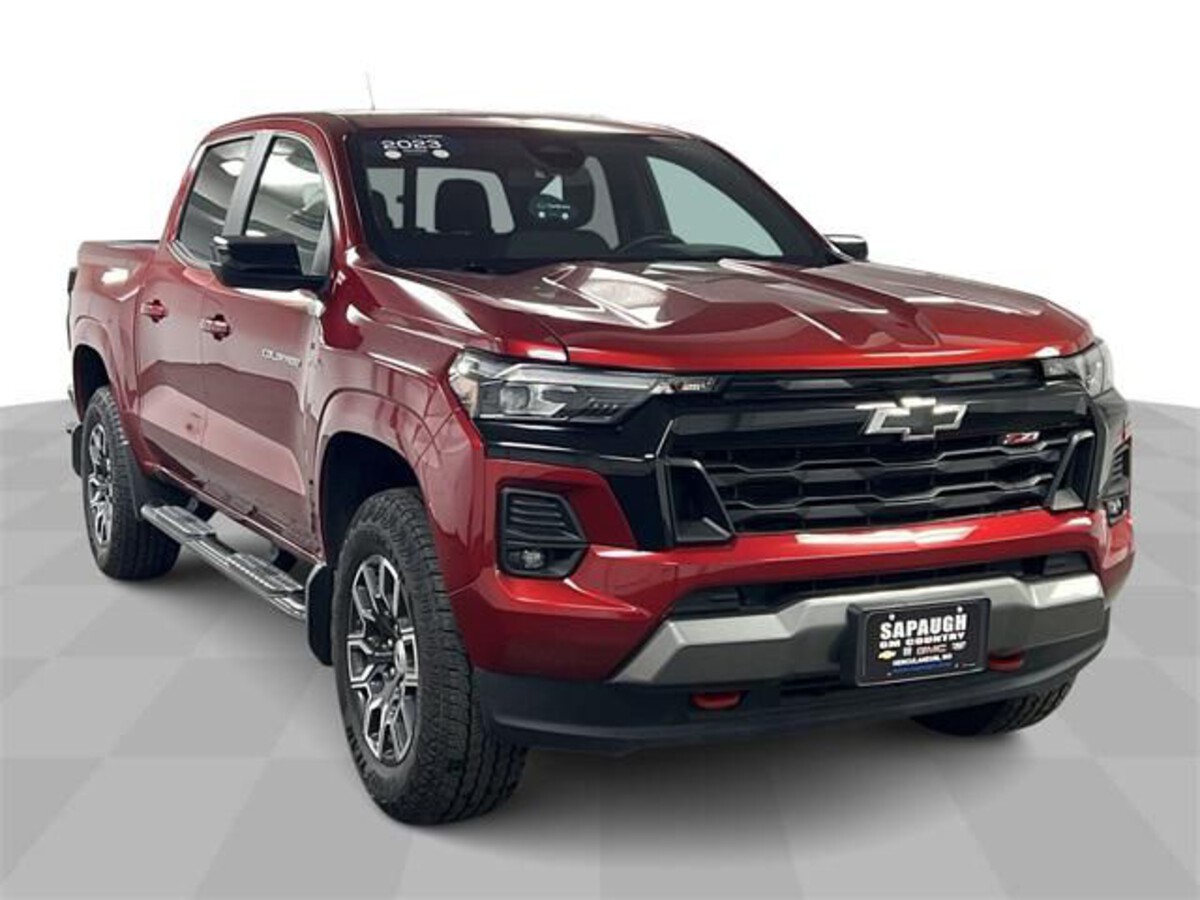The evolution of pickup trucks has reached a critical juncture where functionality meets safety concerns, particularly regarding driver visibility. As modern pickup trucks continue to grow in size, power, and popularity, one of the most pressing issues facing drivers and pedestrians alike is the dramatic variation in front-driving visibility across different models.
This comprehensive analysis examines the stark contrasts between pickup trucks that excel in providing clear forward vision and those that create dangerous blind zones, highlighting how design choices, engineering priorities, and market demands have shaped this crucial safety aspect.
Front-driving visibility in pickup trucks is not merely a convenience feature but a fundamental safety requirement that directly impacts accident prevention, pedestrian safety, and overall driving confidence.
The height of the hood, the angle of the windshield, the positioning of the A-pillars, and the overall design philosophy of each manufacturer play pivotal roles in determining how much of the road ahead a driver can see.
Pickup trucks are so tall and wide that the hood creates a massive blind spot that can hide pedestrians from view, making this issue particularly critical for urban and suburban driving scenarios.
Understanding these visibility characteristics becomes essential for potential buyers, fleet managers, and safety advocates who must balance the practical benefits of pickup trucks against their inherent visibility limitations.
The following detailed analysis provides insights into both the exemplary models that prioritize driver visibility and the problematic designs that create significant safety concerns, offering a comprehensive guide for making informed decisions in today’s diverse pickup truck market.
Best Front-Driving Visibility Pickup Trucks
These exceptionally designed vehicles feature optimized seating positions and precision-engineered greenhouse proportions that deliver superior forward visibility through years of confident driving across diverse terrain conditions and challenging parking scenarios.
Their thoughtful engineering includes strategically positioned A-pillars, expansive windshield areas, and elevated driver seating that resist the sight-line obstructions typically created by hood height variations or structural design compromises during normal driving operations.
From navigating tight construction sites that demand precise front-end awareness to maneuvering through crowded parking lots where pedestrian safety matters, these remarkable visibility systems continue providing clear forward sight lines without developing blind spot complications or restricted viewing angles.
Owners report enhanced driving confidence with these superior sight-line solutions a safety-enhancing quality feature that proves its worth through improved hazard detection and reduced accident risk throughout various driving environments.
1. Ford Maverick (2024-2025)
The Ford Maverick stands as a remarkable achievement in compact pickup truck design, particularly excelling in front-driving visibility through its thoughtful engineering and human-centered design approach.
The Ford Maverick is refreshed for 2025, with updated styling, improved infotainment tech, and more driver-assistance features, but its visibility advantages stem from fundamental design choices that prioritize the driver’s ability to see the road ahead clearly.
The Maverick’s compact dimensions work in its favor for visibility, with a relatively low hood line compared to full-size pickup trucks. The front-end design incorporates a more aerodynamic profile that naturally reduces the blind zone directly in front of the vehicle.
The windshield angle is optimized to provide excellent forward visibility while maintaining structural integrity and aesthetic appeal. The A-pillars are positioned to minimize interference with the driver’s field of view, and the overall greenhouse design maximizes glass area without compromising the truck’s structural strength.
One of the most significant advantages of the Maverick is its seating position relative to the hood height. The driver sits in a commanding position that allows for excellent visibility of the immediate road surface ahead, reducing the dangerous blind zone that plagues larger pickup trucks.
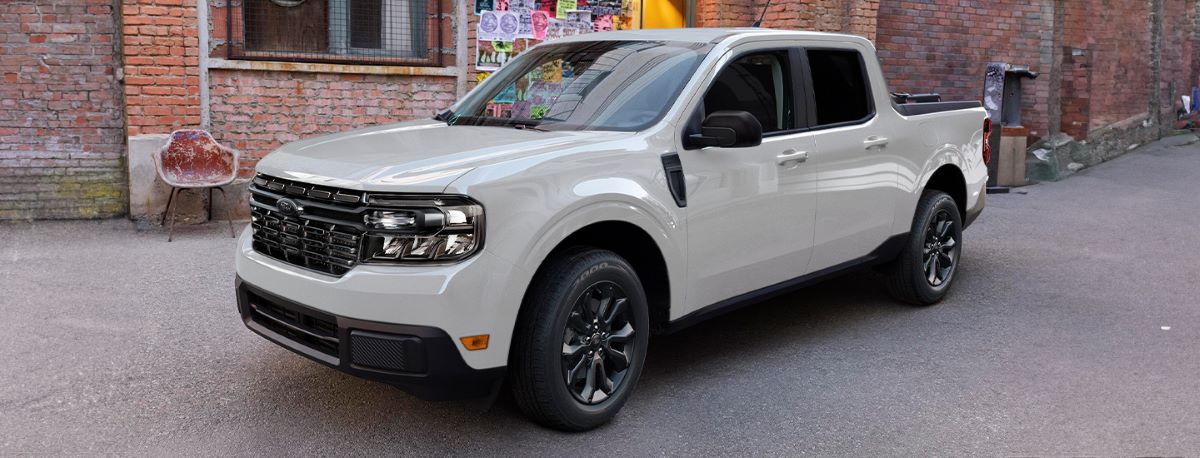
This design choice makes the Maverick particularly suitable for urban environments where pedestrian safety is paramount. The truck’s front overhang is minimal, which means the driver can see much closer to the front bumper than in traditional full-size pickups.
The integration of modern safety technology further enhances the Maverick’s visibility advantages. The available 360-degree camera system provides additional visual information about the vehicle’s surroundings, while the front-facing camera specifically helps drivers navigate tight spaces and parking situations.
The digital instrument cluster can display camera feeds and proximity warnings, creating a comprehensive visibility support system that complements the already excellent natural sight lines.
The Maverick’s design philosophy represents a departure from the “bigger is better” mentality that has dominated the pickup truck market for decades.
By focusing on efficiency and practicality rather than maximum size and intimidation factor, Ford has created a pickup truck that doesn’t sacrifice visibility for presence.
The result is a vehicle that feels safer to drive in congested areas, easier to maneuver in parking lots, and more considerate of other road users, particularly vulnerable pedestrians and cyclists.
2. Honda Ridgeline (2024-2025)
The Honda Ridgeline has long been praised for its unique approach to pickup truck design, and its exceptional front-driving visibility is one of its standout features.
Unlike traditional body-on-frame pickup trucks, the Ridgeline uses a unibody construction similar to an SUV, which allows for more flexible design choices that prioritize driver visibility and overall safety.
The Ridgeline’s hood design is notably lower than most pickup trucks in its class, creating a significantly smaller blind zone in front of the vehicle. The front fascia is designed with a more car-like profile that slopes gently away from the driver’s line of sight, rather than the bluff, vertical front ends common in traditional pickup trucks.
This design choice dramatically improves the driver’s ability to see pedestrians, small vehicles, and road hazards that might be hidden by the hood of a conventional pickup truck.
The windshield in the Ridgeline is positioned at an angle that maximizes the driver’s forward field of view while providing excellent visibility to the sides as well.
The A-pillars are carefully designed to be as thin as possible while maintaining structural integrity, reducing the blind spots that can hide oncoming traffic during turns.
The overall greenhouse design prioritizes visibility over aggressive styling, resulting in a truck that feels more like driving a large SUV than a traditional pickup truck.
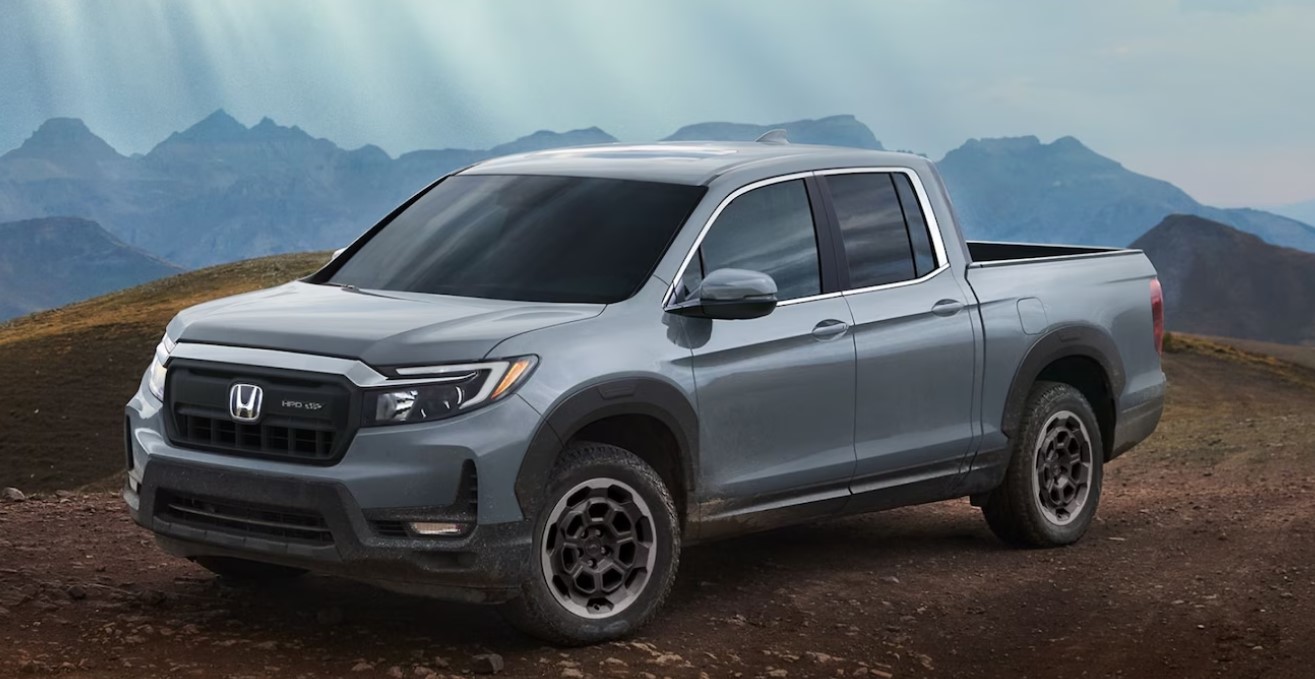
Honda’s commitment to safety is evident in the Ridgeline’s standard Honda Sensing suite of safety features, which includes a collision mitigation braking system that can detect pedestrians and cyclists in the vehicle’s path.
However, the truck’s excellent natural visibility means that drivers are less likely to find themselves in situations where these emergency systems need to intervene.
The combination of good sight lines and advanced safety technology creates a comprehensive approach to preventing accidents before they occur.
The interior design of the Ridgeline also contributes to its visibility advantages. The dashboard is lower than in many pickup trucks, and the seating position is optimized to provide the best possible view of the road ahead.
The side mirrors are large and well-positioned, and the available blind spot monitoring system provides additional awareness of vehicles in adjacent lanes. The overall result is a pickup truck that feels safer and more confidence-inspiring to drive in all conditions.
The Ridgeline’s approach to pickup truck design demonstrates that it’s possible to create a capable, practical truck without sacrificing visibility and safety.
While some traditional pickup truck buyers may prefer the more aggressive styling of conventional trucks, the Ridgeline’s visibility advantages make it an excellent choice for drivers who prioritize safety and ease of driving over maximum towing capacity or rugged appearance.
3. Nissan Frontier (2024-2025)
The Nissan Frontier has undergone significant redesign in recent years, and one of the most notable improvements has been in front-driving visibility.
We have also noticed that Ram 1500 and Nissan Titan have good forward visibility, and this reputation for good visibility extends to the Frontier as well, making it one of the better choices among mid-size pickup trucks for drivers who prioritize clear sight lines.
The Frontier’s hood design strikes an excellent balance between the aggressive styling that pickup truck buyers expect and the practical visibility needs of daily driving.
The hood line is lower than many competitors, and the front end design incorporates subtle sculpting that helps direct the driver’s eye to the road ahead rather than creating visual barriers.
The grille design, while bold and distinctive, doesn’t impede forward visibility, and the overall proportions of the front end are optimized for both aesthetics and function.
One of the Frontier’s key advantages is its greenhouse design, which prioritizes glass area and optimal pillar placement. The windshield angle provides excellent forward visibility while maintaining aerodynamic efficiency, and the A-pillars are positioned to minimize blind spots during turns and lane changes.
The side windows are large and provide excellent visibility to the sides, making it easier to spot pedestrians, cyclists, and other vehicles in urban environments.
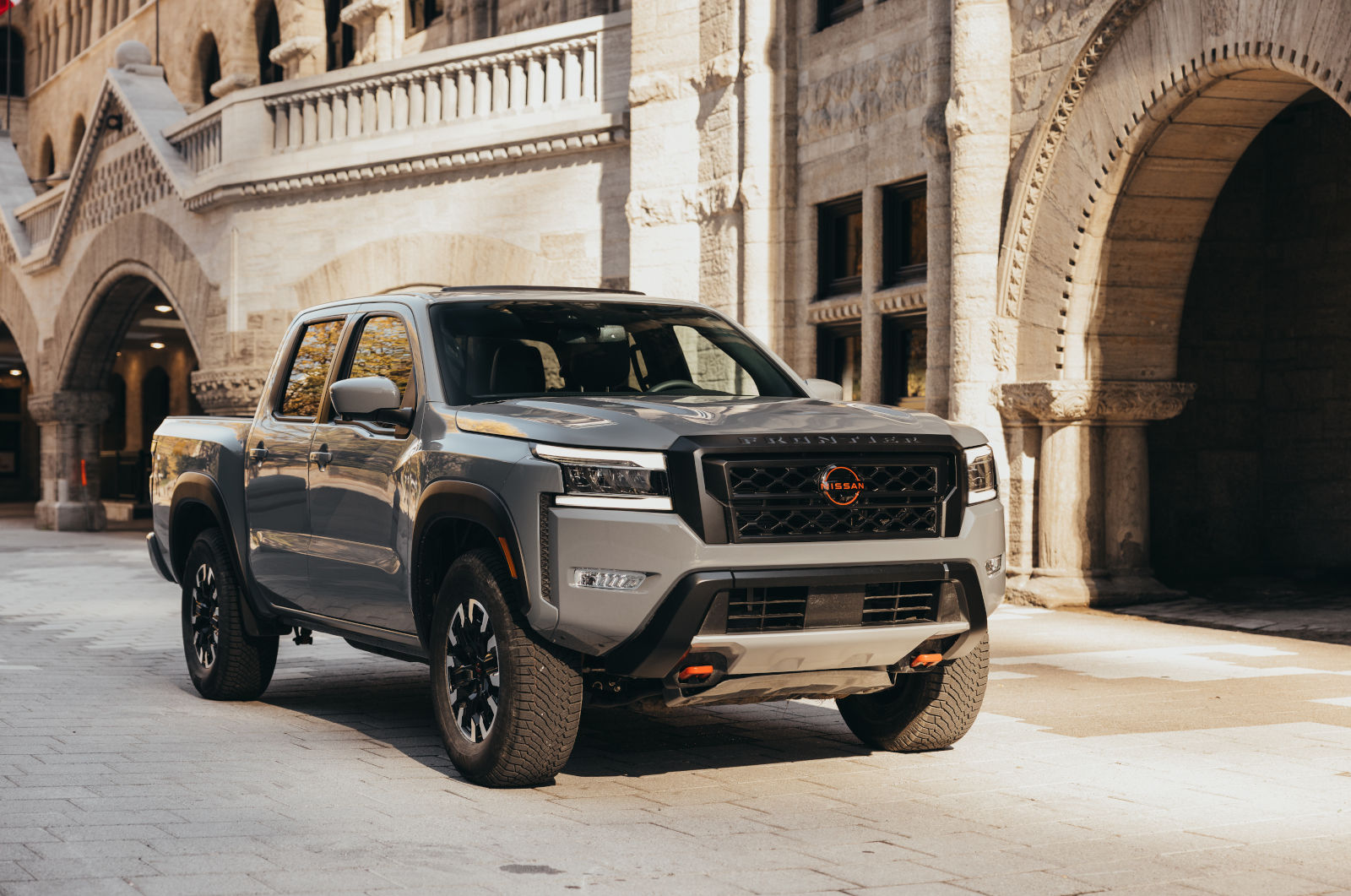
The Frontier’s seating position is another factor that contributes to its excellent visibility. The driver sits at a height that provides a commanding view of the road ahead while maintaining the ability to see close to the front of the vehicle.
This positioning is particularly beneficial in stop-and-go traffic, parking situations, and when navigating tight spaces where visibility of the immediate area around the truck is crucial.
Nissan has also integrated modern technology to enhance the Frontier’s visibility advantages. The available around-view monitor system provides a bird’s-eye view of the vehicle’s surroundings, making it easier to navigate tight spaces and avoid obstacles.
The front-facing camera is particularly useful for parking and low-speed maneuvering, while the rear camera and side mirror cameras provide comprehensive coverage of the truck’s blind spots.
The Frontier’s approach to design demonstrates that mid-size pickup trucks can provide excellent visibility without sacrificing the rugged capability that buyers expect.
The truck’s relatively compact size compared to full-size pickups naturally contributes to better visibility, but Nissan’s attention to detail in optimizing sight lines and integrating helpful technology makes the Frontier stand out even among its mid-size competitors.
4. Chevrolet Colorado (2024-2025)
The Chevrolet Colorado represents a thoughtful approach to mid-size pickup truck design, with front-driving visibility being one of its strongest attributes.
The Colorado’s design team has prioritized driver sight lines while maintaining the bold, confident appearance that pickup truck buyers demand, resulting in a vehicle that offers both style and excellent forward visibility.
The Colorado’s hood design is notably well-executed, with a profile that slopes away from the driver’s line of sight to minimize the front blind zone.
The hood is proportioned to provide the aggressive styling cues that define modern pickup trucks while keeping the height manageable for optimal visibility.
The front fascia design incorporates subtle character lines and sculpting that help direct the eye forward rather than creating visual barriers, and the overall front end proportions are carefully balanced to maximize both form and function.
The windshield and A-pillar design in the Colorado are particularly noteworthy for their contribution to excellent forward visibility. The windshield angle is optimized to provide a clear view of the road ahead while maintaining structural integrity and crash protection standards.
The A-pillars are designed to be as narrow as possible while still providing the necessary structural support, reducing the blind spots that can hide other vehicles during turns and intersection navigation.
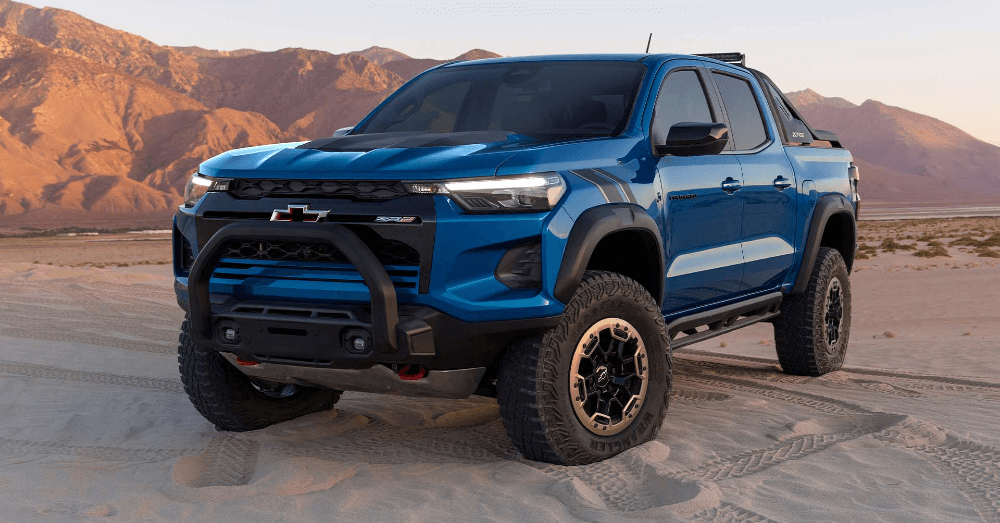
The Colorado’s seating position is another key factor in its excellent visibility characteristics. The driver sits at an optimal height that provides a commanding view of the road ahead while maintaining good visibility of the area immediately in front of the truck.
This positioning is particularly beneficial for urban driving, where the ability to see pedestrians and cyclists is crucial for safety. The seat adjustability options allow drivers of different heights to find the optimal position for maximum visibility.
Technology integration in Colorado further enhances its visibility advantages. The available technology package includes a surround-view camera system that provides comprehensive coverage of the truck’s surroundings, with the front camera being particularly useful for navigating tight spaces and avoiding obstacles.
The digital instrument cluster can display camera feeds and proximity warnings, creating an integrated visibility support system that complements the truck’s already excellent natural sight lines.
Colorado’s interior design also contributes to its visibility advantages. The dashboard height is optimized to provide the best possible forward view without compromising the truck’s interior functionality. The instrument panel design is clean and uncluttered, reducing visual distractions and allowing the driver to focus on the road ahead.
The side mirrors are properly sized and positioned for optimal coverage of the truck’s blind spots, and the available blind spot monitoring system provides additional safety backup.
Also Read: Top 5 Hybrids With the Quietest, Smoothest Switchovers
5. Ram 1500 (2024-2025)
We have also noticed that Ram 1500 and Nissan Titan have good forward visibility, and the Ram 1500 stands out among full-size pickup trucks for its thoughtful approach to driver visibility.
Despite being a large, full-size pickup truck, the Ram 1500 manages to provide better forward visibility than many of its competitors through careful design choices and engineering priorities that balance capability with safety.
The Ram 1500’s hood design is one of its most impressive features from a visibility standpoint. While maintaining the bold, aggressive styling that full-size pickup truck buyers expect, the hood profile is carefully sculpted to minimize the blind zone directly in front of the vehicle.
The power dome and character lines are positioned to enhance the truck’s appearance while not interfering with the driver’s sight lines, and the overall hood height is kept as low as possible given the truck’s powerful engine options and cooling requirements. The greenhouse design of the Ram 1500 prioritizes visibility without compromising the truck’s structural integrity or aesthetic appeal.
The windshield is positioned at an angle that maximizes forward visibility while maintaining aerodynamic efficiency and providing excellent protection in the event of a rollover accident. The A-pillars are engineered to be as narrow as possible while still meeting safety standards, reducing blind spots during turns and lane changes.
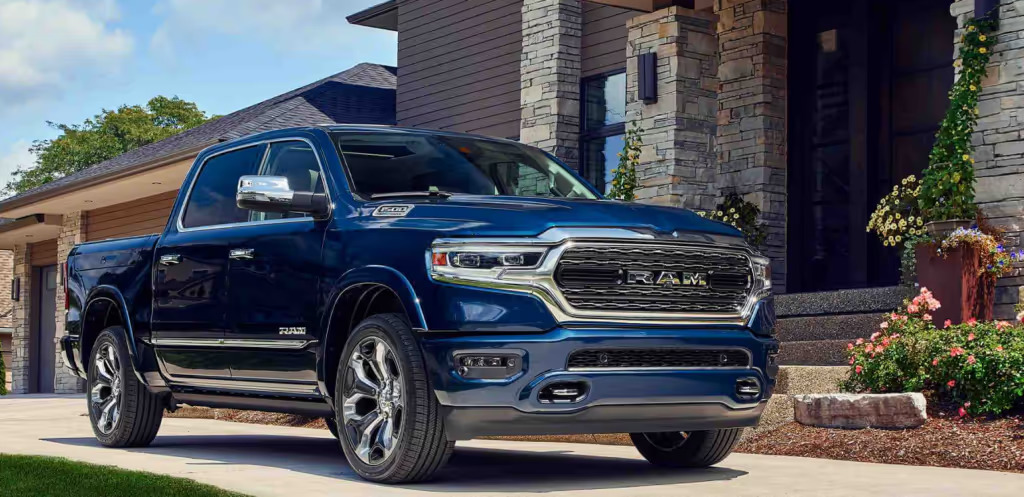
One of the Ram 1500’s most significant advantages is its seating position optimization. The driver sits at a height that provides excellent visibility of the road ahead while maintaining the commanding presence that full-size pickup truck buyers desire.
The seat adjustability options are extensive, allowing drivers to find the optimal position for maximum visibility regardless of their height or body type. The steering wheel adjustability also contributes to finding the perfect driving position for optimal sight lines.
The Ram 1500’s integration of modern technology enhances its already good natural visibility. The available 360-degree camera system provides comprehensive coverage of the truck’s surroundings, with high-resolution cameras that deliver clear images in various lighting conditions.
The front-facing camera is particularly useful for navigating tight spaces and avoiding obstacles, while the side cameras help with lane changes and parking maneuvers.
The interior design of the Ram 1500 also contributes to its visibility advantages. The dashboard design is carefully crafted to provide the best possible forward view while maintaining the premium appearance and functionality that buyers expect.
The instrument cluster is positioned optimally for easy viewing without obstructing the forward view, and the center console design doesn’t interfere with the driver’s sight lines to the passenger side.
5 Pickup Trucks with Significant Blind Zone Issues
These visibility-challenged vehicles create dangerous sight-line restrictions due to elevated hood designs, thick A-pillar structures, and poor seating geometry that obscure critical forward visibility areas during normal driving, parking, and low-speed maneuvering operations.
Their problematic engineering includes excessive hood height, limited windshield rake angles, and compromised driver positioning that amplify the visibility obstructions typically associated with large truck proportions or styling-focused design priorities.
From hidden pedestrians during parking lot navigation to obscured traffic signs that create hazardous driving conditions, these blind zone issues demand constant head movement and supplemental mirror usage.
Owners discover that while these pickups offer impressive hauling capabilities and commanding road presence, their visibility limitations create safety concerns and require heightened awareness strategies to compensate for significant forward blind spots that compromise driving confidence.
1. Ford F-150 (Certain Configurations)
The Ford F-150, while being America’s best-selling pickup truck, faces significant challenges in front-driving visibility, particularly in certain configurations and trim levels.
The truck’s massive size and aggressive styling, while appealing to many buyers, create substantial blind zones that can pose serious safety risks, especially in urban environments where pedestrian safety is paramount.
The F-150’s hood height varies significantly across different trim levels and engine options, with some configurations creating particularly problematic blind zones.
The Raptor and higher trim levels with larger engines require taller hoods to accommodate the powerplant and provide adequate cooling, resulting in a front blind zone that can extend up to 20 feet or more in front of the vehicle.
Pickup trucks are so tall and wide that the hood creates a massive blind spot that can hide pedestrians from view, and the F-150 exemplifies this problem in its larger configurations.
The aggressive styling of the F-150, while visually striking, contributes to its visibility problems. The massive grille and bluff front end create a wall-like appearance that prioritizes presence and intimidation over practical visibility considerations.
The hood design, with its prominent power bulges and character lines, is optimized for visual impact rather than sight line optimization, resulting in a front end that obscures a significant portion of the road immediately ahead of the vehicle.
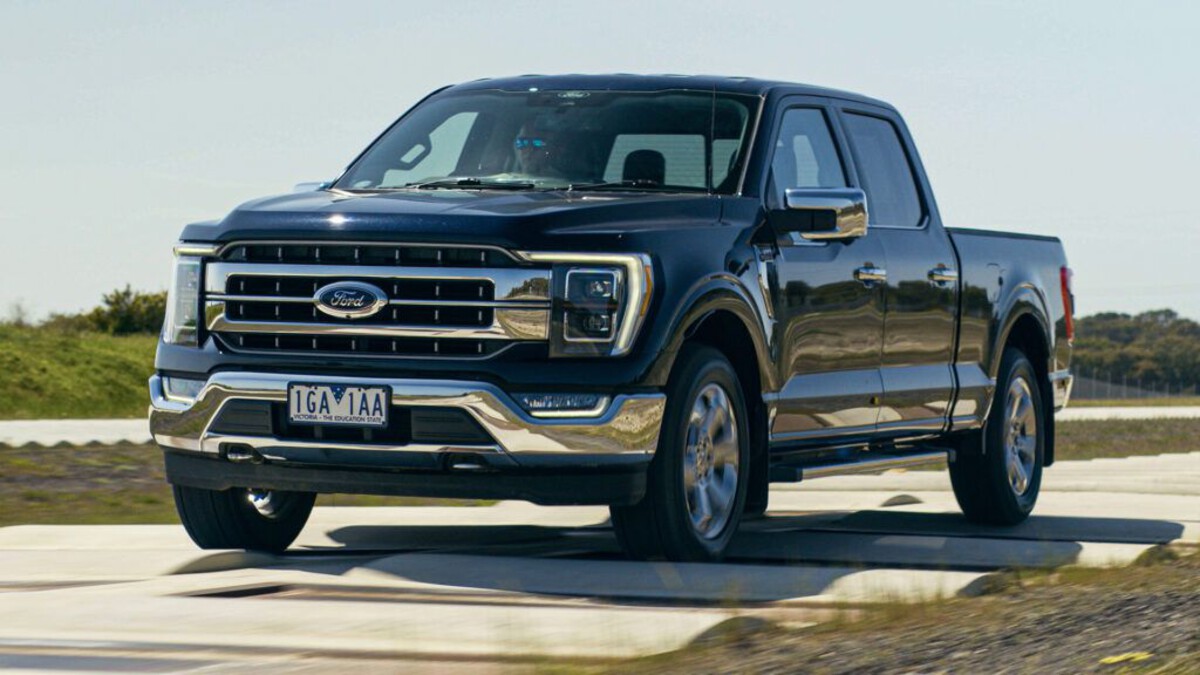
The F-150’s size and weight also necessitate a higher seating position to provide adequate visibility over the hood, but this creates a trade-off where the driver sits so high that the ability to see down to the road surface immediately in front of the truck is compromised.
This is particularly problematic in parking situations, where the driver may not be able to see small obstacles, curbs, or even children who might be in the vehicle’s path.
The truck’s A-pillar design, while structurally necessary for crash protection, creates additional blind spots that can hide other vehicles during turns and lane changes.
The thickness of the A-pillars is dictated by the truck’s size and weight requirements, but this results in larger blind spots than would be found in smaller vehicles. When combined with the massive hood blind zone, these design elements create a challenging visibility environment for drivers.
Despite Ford’s integration of advanced safety technology, including pre-collision systems and 360-degree cameras, the F-150’s fundamental design creates visibility challenges that technology can only partially address.
While these systems can alert drivers to obstacles and automatically apply brakes in emergency situations, they don’t eliminate the fundamental problem of the driver’s inability to see potential hazards with their own eyes.
2. Chevrolet Silverado 2500/3500 HD
The Chevrolet Silverado HD series represents the end of pickup truck design, where maximum capability and rugged durability take precedence over visibility considerations.
The Chevrolet Silverado 2500 is a smooth-operating heavy-duty pickup that costs thousands less than the competition, but its heavy-duty design requirements create some of the most challenging visibility conditions in the pickup truck segment.
The Silverado HD’s hood height is dictated by the massive diesel and gasoline engines it must accommodate, along with the heavy-duty cooling systems required for towing and hauling applications.
This results in a hood line that sits significantly higher than light-duty pickup trucks, creating a front blind zone that can extend 25 feet or more from the front bumper. The sheer height of the hood means that entire vehicles, let alone pedestrians, can be completely hidden from the driver’s view.
The truck’s overall height and ground clearance, while beneficial for off-road capability and approach angles, contribute to the visibility problems by placing the driver at an extreme height above the road surface.
This elevated position makes it nearly impossible to see the ground immediately in front of the vehicle, creating dangerous conditions in parking lots, driveways, and urban environments where pedestrians and small obstacles may be present.
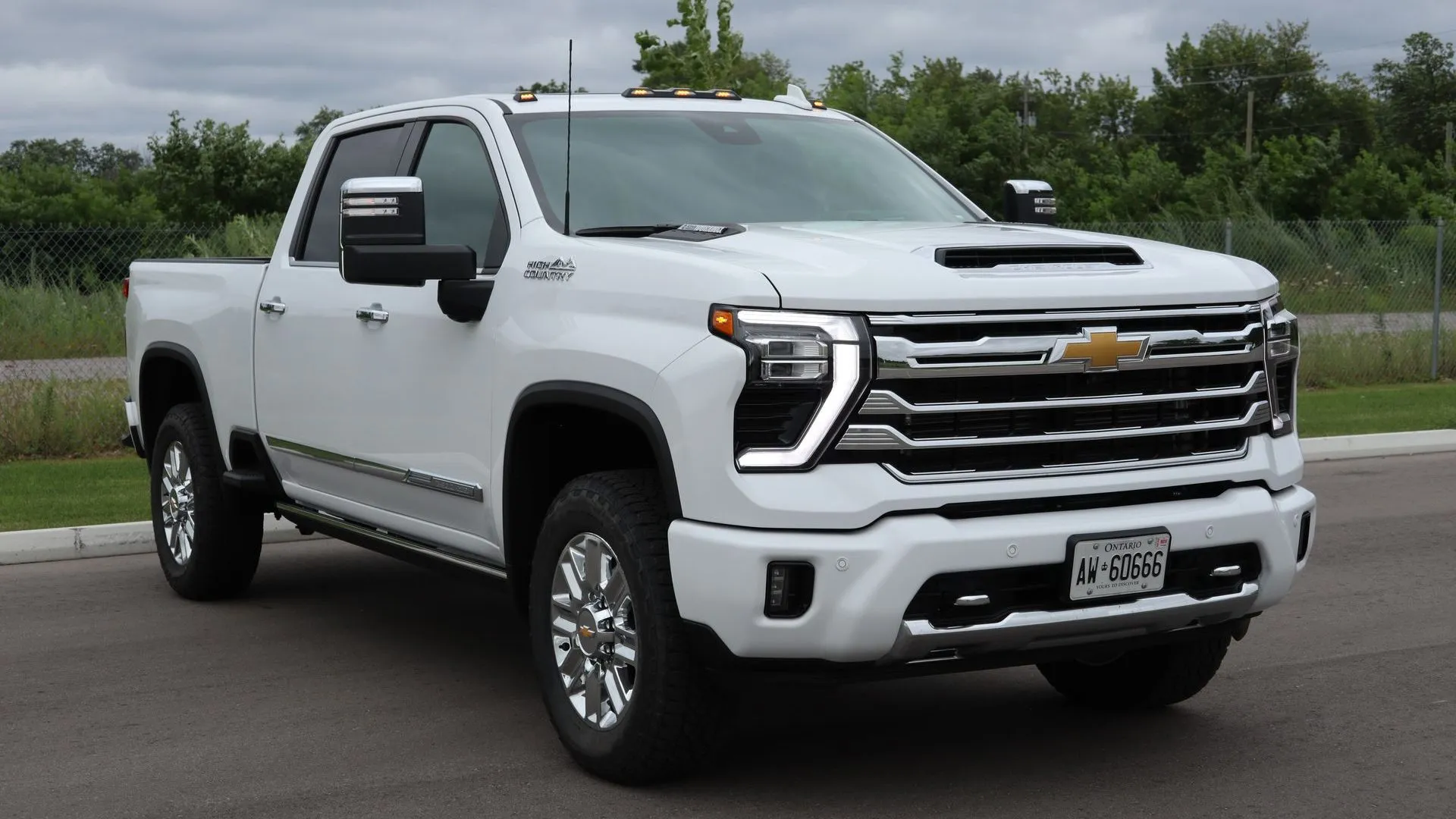
The Silverado HD’s front-end design prioritizes functionality and durability over visibility optimization. The massive grille is designed to provide maximum airflow to the engine and cooling systems, while the bumper and front fascia are built to withstand heavy use and potential impact.
These functional requirements result in a bluff, vertical front end that creates a significant blind zone and makes it difficult for the driver to judge distances when parking or maneuvering in tight spaces.
The A-pillar design in the Silverado HD is particularly problematic due to the truck’s size and weight requirements. The pillars must be extremely robust to provide adequate structural support in the event of a rollover, but this results in very thick pillars that create substantial blind spots.
During turns and lane changes, these blind spots can easily hide entire vehicles, creating dangerous situations on busy roads and highways. The seating position in the Silverado HD, while commanding and confidence-inspiring on the highway, creates challenges for visibility in close-quarters situations.
The driver sits so high above the road surface that judging distances and spotting low obstacles becomes extremely difficult. This is compounded by the truck’s long wheelbase and overall length, which make it challenging to maneuver in tight spaces even with good visibility, let alone with the significant blind zones inherent in the design.
3. Ram 2500/3500 Heavy Duty
The Ram Heavy Duty series, while offering exceptional capability and towing capacity, presents significant visibility challenges that stem from its heavy-duty design requirements and aggressive styling choices.
The Ram 3500 took the “Most Likely to Last 250,00 Miles” top spot in 2024, demonstrating its durability, but this heavy-duty construction comes at the cost of driver visibility, particularly in the critical area directly in front of the vehicle.
The Ram HD’s hood height is necessitated by the large displacement engines and heavy-duty cooling systems required for its intended applications.
The Cummins diesel engine option, in particular, requires significant hood height and length to accommodate its size and provide adequate airflow for cooling.
This results in a hood that extends far forward and upward from the driver’s position, creating a massive blind zone that can hide significant portions of the road ahead.
The truck’s distinctive styling, with its prominent ram’s head logo and aggressive grille design, contributes to the visibility problems by creating a high, vertical front end that prioritizes visual impact over practical sight lines.
The crosshair grille, while iconic and visually striking, sits at a height that can obscure the driver’s view of low-sitting vehicles and pedestrians. The overall front end design creates a wall-like appearance that makes it difficult to judge distances and spot potential hazards.
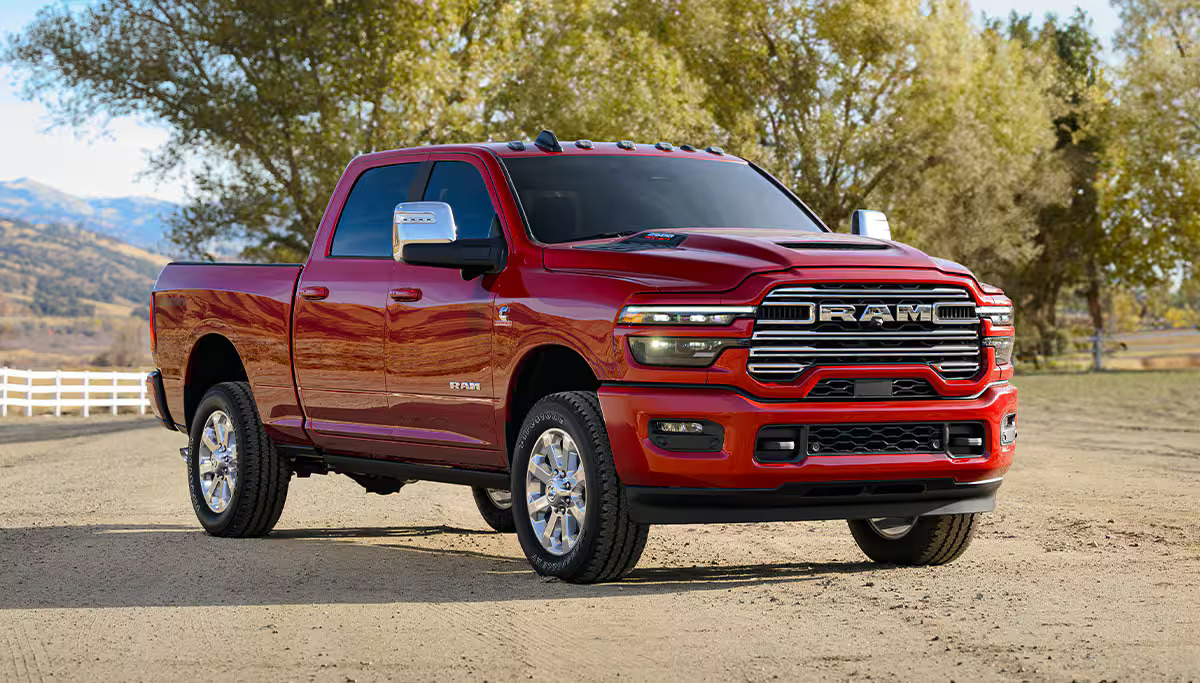
The Ram HD’s ground clearance and overall height, while beneficial for off-road capability and towing applications, place the driver at an extreme elevation above the road surface.
This height differential makes it nearly impossible to see the area immediately adjacent to the front bumper, creating a dangerous blind zone in parking lots, driveways, and urban environments. Small children, pets, and low obstacles can be completely invisible to the driver despite being directly in the vehicle’s path.
The A-pillar design in the Ram HD reflects the truck’s heavy-duty construction requirements, with thick pillars necessary to provide adequate structural support for the vehicle’s weight and towing capacity.
These robust pillars create substantial blind spots that can hide other vehicles during turns and lane changes, making highway driving more challenging and potentially dangerous. The thickness of the pillars is particularly noticeable when navigating intersections or making turns in urban environments.
The interior design of the Ram HD, while luxurious and well-appointed, doesn’t fully address the visibility challenges created by the truck’s size and design.
The seating position, while adjustable, cannot overcome the fundamental limitation created by the high hood line and massive front end. Even with the seat adjusted to its highest position, many drivers find it difficult to see over the hood effectively, particularly when trying to judge distances during parking maneuvers.
4. GMC Sierra 2500/3500 HD
The GMC Sierra HD series shares many of the same visibility challenges as its Chevrolet Silverado counterpart, but with additional styling elements that can further compromise driver sight lines.
The 2024 GMC Sierra 1500 looks as sharp as a drywall knife, with enough powertrain and cab configurations to finish the rest of the house after the mud dries, but the heavy-duty versions of the Sierra prioritize capability and bold styling over visibility considerations.
The Sierra HD’s hood design incorporates distinctive styling elements that, while visually appealing, can create additional visibility challenges. The prominent hood bulges and character lines, designed to convey power and capability, can create visual distractions and additional blind spots.
The hood height, dictated by the large engines and cooling systems, creates a significant blind zone that extends far in front of the vehicle, making it difficult to see pedestrians, small vehicles, and road hazards.
The truck’s front end design features GMC’s signature grille and lighting treatment, which creates a bold, aggressive appearance but contributes to visibility problems.
The large grille openings and robust construction create a high, vertical front end that can obscure the driver’s view of the road immediately ahead. The front bumper design, while functional for heavy-duty applications, adds additional height and bulk to the front end, further compromising visibility.
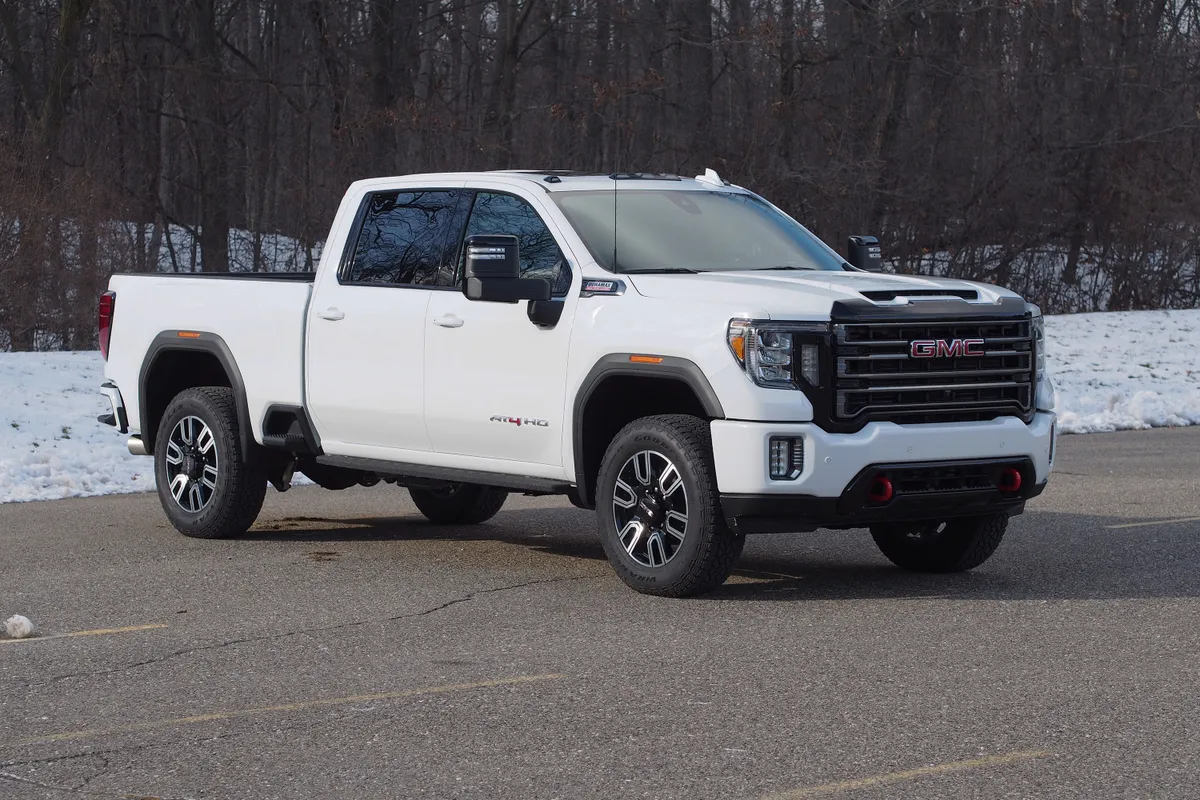
The Sierra HD’s overall proportions reflect its heavy-duty mission, with a tall, wide stance that provides excellent stability for towing and hauling but creates challenges for everyday driving visibility.
The high beltline and elevated seating position place the driver far above the road surface, making it difficult to see the area immediately surrounding the vehicle. This is particularly problematic in urban environments where pedestrian safety is a primary concern.
The A-pillar design in the Sierra HD must accommodate the structural requirements of a heavy-duty truck, resulting in thick pillars that create substantial blind spots.
These blind spots can hide entire vehicles during turns and lane changes, making highway driving more challenging and potentially dangerous. The pillar thickness is particularly noticeable when navigating complex intersections or merging situations where visibility of adjacent traffic is crucial.
Despite GMC’s integration of advanced safety technology, including cameras and sensors, the Sierra HD’s fundamental design creates visibility challenges that cannot be entirely overcome through technological solutions.
While these systems provide valuable assistance and can alert drivers to potential hazards, they don’t replace the need for good natural visibility. Drivers must rely heavily on technology to safely operate the vehicle in many situations.
5. Ford F-250/F-350 Super Duty
The Ford Super Duty series represents the pinnacle of heavy-duty pickup truck capability, but this focus on maximum performance comes at a significant cost in terms of driver visibility.
In 2023, the Ford F-350 Super Duty claimed the throne as the most durable model, with a 49.1% chance of crossing the 250,000-mile mark and beyond, highlighting its exceptional durability, but the design requirements for this level of capability create some of the most challenging visibility conditions in the pickup truck market.
The Super Duty’s hood height is among the highest in the pickup truck segment, necessitated by the large displacement gasoline and diesel engines that provide the truck’s impressive towing and hauling capabilities.
The 6.7-liter Power Stroke diesel engine, in particular, requires significant clearance and cooling capacity, resulting in a hood that extends both forward and upward from the driver’s position. This creates a front blind zone that can extend 25 to 30 feet from the front bumper, making it impossible to see large portions of the road ahead.
The truck’s aggressive styling, while appealing to buyers seeking maximum presence and capability, contributes significantly to the visibility problems.
The massive grille openings, robust front bumper, and high hood line create a wall-like front end that prioritizes visual impact over practical sight lines.
The front fascia design, with its emphasis on airflow and cooling, results in a high, vertical profile that obscures the driver’s view of low-sitting vehicles and pedestrians.
The Super Duty’s ground clearance and overall height, while beneficial for off-road capability and heavy-duty applications, place the driver at an extreme elevation that makes close-quarters maneuvering extremely challenging.
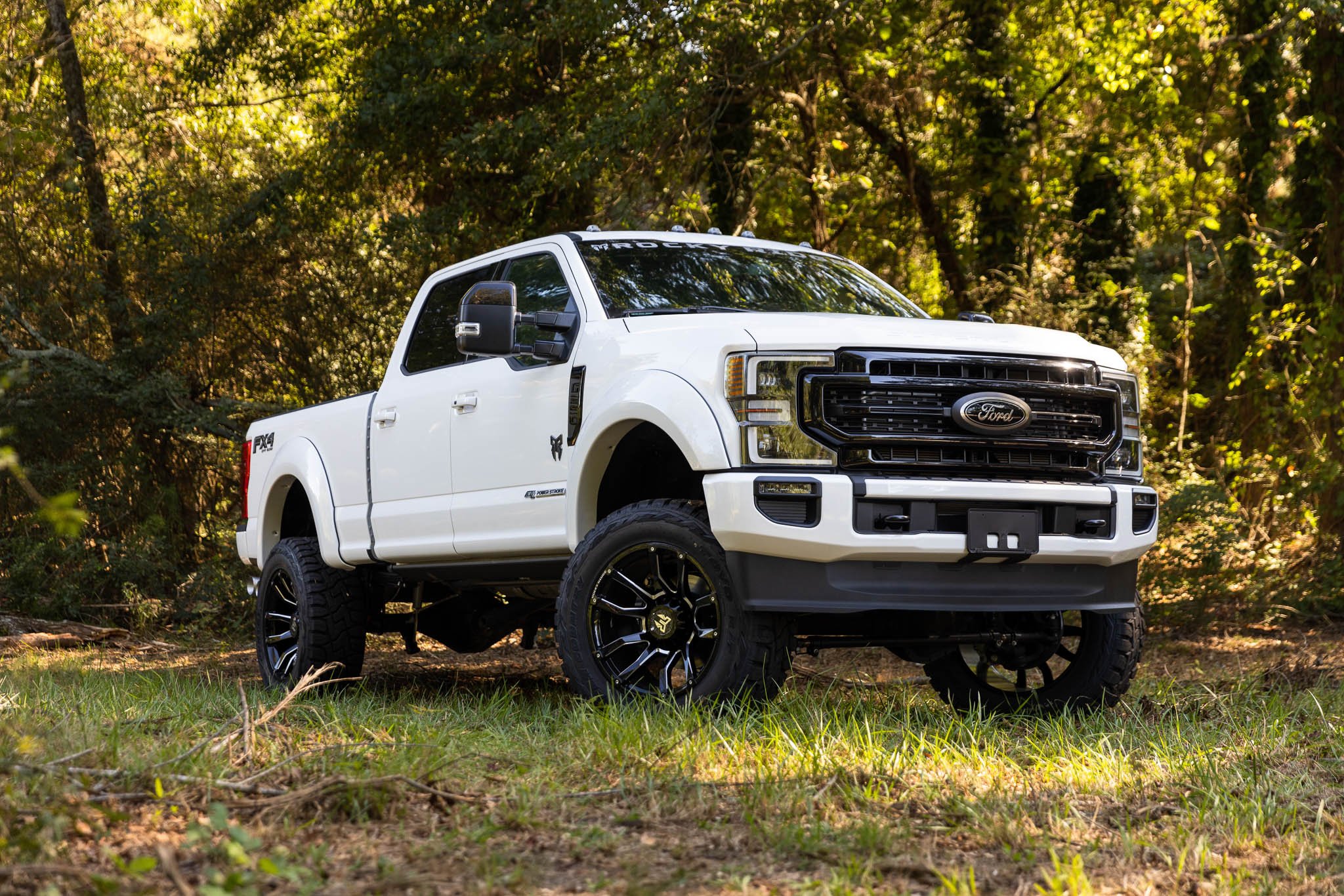
The combination of high seating position and elevated hood line creates a situation where the driver cannot see the ground for a significant distance in front of the vehicle, making parking lot navigation and driveway maneuvering potentially dangerous.
The A-pillar design in the Super Duty reflects the extreme structural requirements of a vehicle designed for heavy-duty commercial use. The pillars must be extremely robust to provide adequate protection in the event of a rollover while supporting the vehicle’s substantial weight and towing loads.
This results in very thick A-pillars that create substantial blind spots, particularly during turns and lane changes where visibility of adjacent traffic is crucial for safety.
The interior design of the Super Duty, while offering excellent comfort and functionality for long-distance driving and work applications, cannot overcome the fundamental visibility limitations created by the truck’s size and design.
The seating position, while adjustable and comfortable, places the driver so high above the road surface that natural visibility is severely compromised. Even with all available seat adjustments, many drivers find it challenging to judge distances and spot potential hazards in the vehicle’s immediate vicinity.
The Super Duty’s reliance on technology to address visibility challenges highlights the fundamental design compromises inherent in heavy-duty pickup trucks.
While systems like 360-degree cameras, proximity sensors, and automatic emergency braking provide valuable assistance, they represent technological solutions to problems created by the vehicle’s basic design priorities.
Drivers must depend heavily on these systems for safe operation, particularly in urban environments where visibility challenges are most pronounced.
Also Read: 5 Cars With the Best Under-Body Shielding and 5 With Rust-Prone Floors

